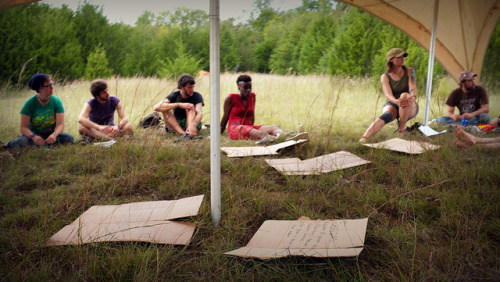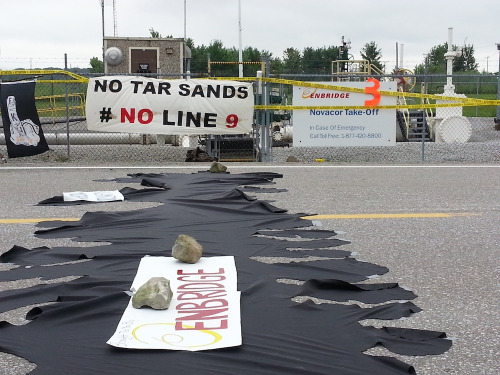By Kiley Kroh, Climate Progress
While the national debate remains largely focused on President Obama’s impending decision regarding the controversial Keystone XL pipeline, communities across the U.S. and Canada are grappling with the oil and gas industry’s rapidly expanding pipeline network — cutting through their backyards, threatening water supplies, and leaving them vulnerable to devastating spills.
As production booms in Alberta’s tar sands and fracking opens up vast oil and natural gas deposits around America, companies are increasingly desperate for new pipelines to get their product to market. “We’ve so narrowly focused on Keystone that a lot of these other projects aren’t getting the scrutiny they probably need,” said Carl Weimer, executive director of the Pipeline Safety Trust. He explains that as production skyrockets and companies look to cash in, no one is really in charge of it all. “We’re leaving it up to these individual companies to come up with their own solutions to figure out how to move energy and we don’t have any national policy guiding those decisions.”
According to a recent analysis of federal Pipeline and Hazardous Materials Safety Administration data, since 1986 there have been nearly 8,000 incidents, resulting in more than 500 deaths, more than 2,300 injuries, and nearly $7 billion in damage.
Here are three of the most recent pipeline controversies emerging around the country:
1. Bluegrass Pipeline

Land owners and protesters gather on the steps of the Kentucky state capitol to protest the Bluegrass Pipeline. CREDIT: AP Photo/Dylan Lovan
Opposition is growing to the proposed 500-mile bluegrass pipeline, which would transport flammable natural gas liquids across Kentucky to an existing line that terminates in the Gulf. Landowners and environmentalists gathered at the state capital last week to protest the project, which they fear would threaten water supplies and safety. Residents were caught off guard by the project — landowner Stacie Meyer said she noticed survey markers going up near her property and had to search the internet and consult her neighbors to find out what they were for.
Locals are concerned the company, Williams Co., could use imminent domain to seize the land if opposition proves too strong. As the Courier-Journal reported, “Brad Slutskin, a Woodford County landowner who spoke at the rally, said the pipeline companies are threatening condemnation based on a loose interpretation of Kentucky law, and most property owners don’t have the money to mount a court challenge.” Residents opposed to the pipeline — including a group of nuns and monks who are refusing to give up their land for the project — delivered a petition with more than 5,200 signatures asking Gov. Beshear to include pipeline and eminent domain-related issues in the upcoming special legislative session, which he refused.
“Knowing a pipeline is coming through, is like waiving a red flag to the creatures of the Earth. God created Earth as our land to use not abuse,” Sister Joetta Venneman told local WAVE News.
As the gas fields north and east of Kentucky boom, the state will likely find itself in the crosshairs of many battles to come. In fact, while the fifth Kentucky county was passing a resolution opposing the Bluegrass Pipeline on Wednesday, the Courier-Journal reported that the project may already have some competition — a joint venture to convert an existing natural gas line called the Tennessee Gas Pipeline.
2. Energy East Pipeline

Milo Zeankowski-Giffin, left, and Max Griefen hold signs during a Montpelier, VT tar sands pipeline protest. CREDIT: AP Photo/Toby Talbot
Facing resistance in the U.S. over its Keystone XL proposal, TransCanada Corp. is moving forward with plans for another tar sands pipeline project that would carry almost as much crude as Keystone. The new pipeline, the most expensive in TransCanada’s history, would run from Alberta to the Atlantic seaboard, ending where a new deep-water marine terminal would be built to export the crude overseas. In early August, TransCanada said it received the long-term contracts for about 900,000 barrels of crude per day and Canadian Prime Minister Stephen Harper has already indicated his support for the project.
TransCanada’s proposal has been met with stiff opposition from Canadian environmentalists and native leaders — particularly in Quebec, where Premier Pauline Marois has halted natural gas exploration while last month’s deadly Lac-Megantic crude oil train explosion is still being cleaned up.
The $12 billion development plan calls for converting 1,864 miles of an existing, 55-year-old pipeline currently used for natural gas to carry the oil. Though the proposed route does not cross into the U.S., it does skirt the border with Maine. Perhaps most worrisome to residents of Maine, New Hampshire and Vermont, however, is that the increased shipping capacity from Alberta will impact another pipeline — the 70-year-old Portland Pipeline. Currently, the pipeline is used to ship crude into Canada but residents are concerned the flow will be reversed to bring Canadian tar sands into the U.S. As the Boston Globe explains, “this would provide Canada — whose Alberta-centered oil industry is suffering from too much supply and too little access to overseas markets — its first direct pipeline to a year-round, deep-water port.” Residents throughout New England are staunchly opposed to the region becoming a conduit for the dirtiest form of fossil fuel production, holding anti-pipeline demonstrations in Portland, while 29 Vermont communities passed resolutions banning tar sands oil from the state.
For now, residents of Maine, New Hampshire and Vermont are left with little option other than waiting to see how the Energy East pipeline development may impact the Portland Pipeline. In a statement released earlier this month, the company said, “It is uncertain to us what the entire impact of this proposed project might be on crude movements and crude supplies for the East Coast. We are continuing to evaluate this recent development.”
3. Eastern Gulf Crude Access Pipeline Project

Keystone pipeline in yellow, Eastern in blue and red. Graphic credit: Paul Horn, InsideClimate News
Enbridge’s proposed 774-mile pipeline would run from Illinois to Louisiana and carry oil from North Dakota’s Bakken formation, as well as Canadian tar sands. The pipeline would be capable of transporting almost as much crude as Keystone XL and, as Inside Climate News reports, will likely sail through the regulatory process because much of the pipeline is already constructed as a natural gas line.
“Converting pipelines makes [approval] easier and riskier, too,” explains Weimer. “Keystone is brand new, state of the art pipeline with its own set of problems. Enbridge on the other hand, is converting other pipelines that have already been in the ground for years — putting in new types of crude or switching natural gas to liquid on pipelines that aren’t built to today’s standards. Those old pipes being re-purposed certainly presents a new risk.”
While the Keystone decision is momentarily stalled, Eastern Gulf is just one of many new pipelines being built to ship North American oil to the Gulf Coast for refining and export. According to Inside Climate, “Enbridge plans to build thousands of miles of pipelines over the next few years, including an expansion of its Alberta Clipper pipeline from Canada to Wisconsin. If approved, that line would ship up to 880,000 barrels of Canadian crude into the United States each day, compared to the Keystone’s capacity of 830,000 barrels per day.”
Last month, all five members of Minnesota’s Public Utilities Commission approved increasing the flow of the Alberta Clipper line while refusing concerned citizens the opportunity to testify publicly. The initial expansion still awaits approval from multiple government agencies but Enbridge already has its sights set on a second expansion, which wasn’t discussed at the meeting. The protesters, including several Native American representatives, fear their communities could soon face the same devastating impacts of tar sands development being felt in Alberta. Marty Cobenais of Bemidji, part of the Indigenous Environmental Network, told the Bemidji Pioneer that the pipeline is a major issue for his Red Lake community. “This is huge,” he said. “This is in our back yard.”

A worker cleans up oil in Mayflower, AR days after a pipeline ruptured and spewed oil over lawns and roadways. CREDIT: AP Photo/Jeannie Nuss
These fights are just three of many being waged by citizens across the country. Alabama residents, for instance, have been protesting multiple pipeline projects — including the Plains All-American oil pipeline, which would run 41 miles to Mississippi and through a section of Mobile’s drinking water supply.
Though pipeline companies are seeking to capitalize on the Lac-Megantic tragedy to tout the safety of crude transport over rail, the devastating impacts of pipeline spills are impossible to overlook. Last week, the New York Times profiled two communities in Michigan and Arkansas that are forever changed by tar sands pipeline spills. Though it’s been three years since Enbridge’s pipeline rupture that spewed more than 840,000 gallons of tar sands crude into Michigan’s Kalamazoo River, the region is far from restored. And even despite EPA’s recent order for Exxon to dredge the river, an EPA spokeswoman estimated that 1620,000 gallons of oil will remain in the Kalamazoo.
And in March, an Exxon Mobil pipeline burst, spilling an estimated 210,000 gallons of crude into a Mayflower, Arkansas neighborhood. What’s left behind is bleak: “Four months later, the neighborhood of low-slung brick homes is largely deserted, a ghostly column of empty driveways and darkened windows, the silence broken only by the groan of heavy machinery pawing at the ground as remediation continues.” As Inside Climate News has continued to report, residents are now grappling with the long-term effects of the toxic spill, including the difficult process of relocating their families and the frightnening health complications that have begun to manifest.
In addition to re-purposing old pipelines, there are several aspects of the unchecked expansion of fossil fuel pipelines across the country that has Weimer concerned. First, pipeline regulation needs to be strengthened and clarified. He explains that right now, “regulations are written in such a way that to a vast degree, it’s left up to the pipeline companies to figure out how safe their pipelines are and what to do about it.” And it’s not just oversight — planning future pipeline routes is also dictated by the companies themselves. “The way we leave it up to each company means we could have multiple pipelines from different companies moving [their products] through the same place. Each company is just trying to capitalize and make money. State and local government really hasn’t thought about it much — is unprepared — and pipelines will go into place before there are policies to guide the construction. It can really affect the way local communities may develop and often happens before the community has any sense of what they can do about it.”

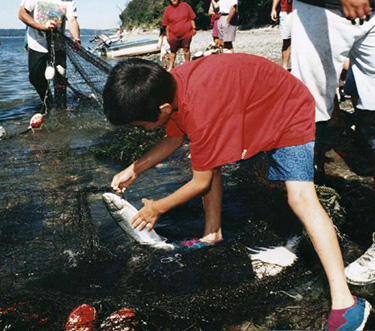

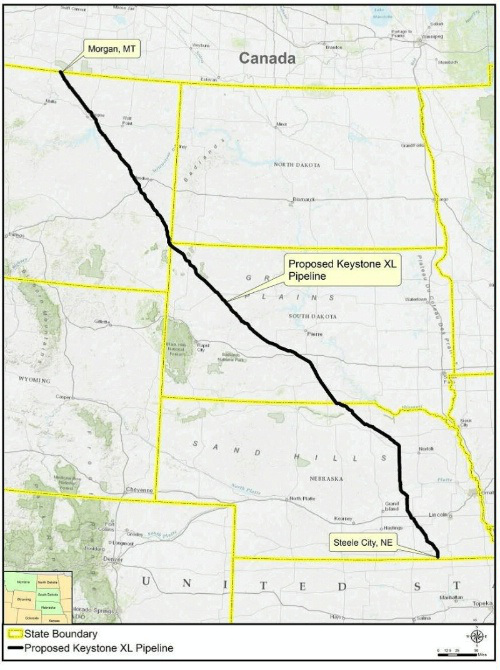



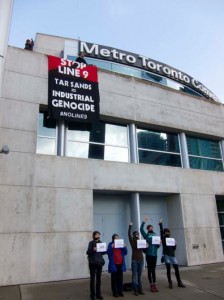



 Land owners and protesters gather on the steps of the Kentucky state capitol to protest the Bluegrass Pipeline. CREDIT: AP Photo/Dylan Lovan
Land owners and protesters gather on the steps of the Kentucky state capitol to protest the Bluegrass Pipeline. CREDIT: AP Photo/Dylan Lovan
 Milo Zeankowski-Giffin, left, and Max Griefen hold signs during a Montpelier, VT tar sands pipeline protest. CREDIT: AP Photo/Toby Talbot
Milo Zeankowski-Giffin, left, and Max Griefen hold signs during a Montpelier, VT tar sands pipeline protest. CREDIT: AP Photo/Toby Talbot
 Keystone pipeline in yellow, Eastern in blue and red. Graphic credit: Paul Horn, InsideClimate News
Keystone pipeline in yellow, Eastern in blue and red. Graphic credit: Paul Horn, InsideClimate News
 A worker cleans up oil in Mayflower, AR days after a pipeline ruptured and spewed oil over lawns and roadways. CREDIT: AP Photo/Jeannie Nuss
A worker cleans up oil in Mayflower, AR days after a pipeline ruptured and spewed oil over lawns and roadways. CREDIT: AP Photo/Jeannie Nuss

